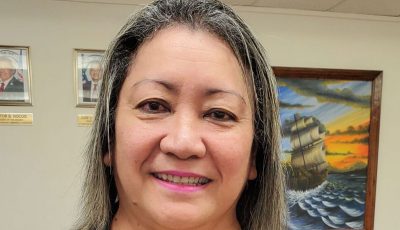Reviving the CNMI’s crippled healthcare industry
Almost a decade ago I left Saipan to further my education, hopeful that I might one day return home, equipped to help improve the CNMI. I am now one year from earning my medical degree from Washington University in St. Louis. Unfortunately, the CNMI has faced countless challenges, including the crippling of its healthcare industry. We witnessed the debacle of the Commonwealth Health Center’s funding reduction and resulting scramble to secure loans, loss of personnel, lack of basic laboratory supplies, and difficulties with medical referrals. To make matters worse, health insurance became ironically inaccessible and less affordable in the CNMI under the Affordable Care Act this year. I am writing to comment on some of the reasons for this troubling development and to offer suggestions for how the current situation might be addressed.
What is the issue? The ACA brought the CNMI’s health insurance industry to a standstill. Amendments to the Public Health Service Act call for coverage of essential health benefits and guarantee availability of coverage. These rules apply to the CNMI and place greater demands on health insurance providers. To offset this burden, the ACA mandates that all lawfully present individuals acquire health insurance or be subject to a penalty. The CNMI predictably opted out of this mandate, given the lack of tax credits to make premiums affordable to CNMI households as well as the lack of an Exchange to facilitate enrollment. Without a larger customer base to counterbalance costlier coverage, CNMI insurers made the reasonable decision not to offer new plans this year. Thus, health insurance has become inaccessible to many of our people on Saipan.
Why does this matter? Some 18,000 people were uninsured at the time of the 2010 Census, and it is likely that many more became uninsured after Public Law 17-92 repealed the employer mandate to provide nonresident workers with health insurance. Without health insurance, many people forego preventive care services. As a result, cancer goes undetected until terminal stages; uncontrolled diabetes leads to kidney failure, infections, and amputations; uncontrolled high blood pressure results in strokes and heart attacks; untreated mental illness leads to attempted or completed suicides; birth defects arise in the absence of prenatal care; and so on. People end up on their deathbeds in the emergency room. Since CHC must provide emergency care regardless of ability to pay, the entire community not only shoulders the cost of uncompensated care as the hospital shifts costs to other payers, but also suffers from having an overburdened, under-resourced emergency department whose services you and your loved ones may require at a moment’s notice. Thus the lack of access to healthcare becomes everyone’s problem.
What can we do? First of all, we need to care about this issue and its impact on our community. Next, we need to be proactive about solving this healthcare crisis. Some options include crying foul over the federal government’s role in bungling our healthcare and putting more pressure on the feds to solve this problems; initiating discussions with other U.S. territories to create a joint exchange or pursue other joint efforts; or branching out on our own to test new waters such as funding our healthcare with local taxation, adopting a single payer system, or using a non-profit insurance model to provide more cost-effective coverage. I believe achieving universal coverage could help stabilize CHC’s financial situation and, more importantly, could provide our people with better health outcomes. I am certain many in the community are discussing this problem. I would be delighted to hear your ideas for mending our system.
I would like to close by sharing a story of personal loss related to this issue. I had the amazing privilege of caring for patients with heart disease and assisting heart surgeons in the operating room last fall. All the while, my thoughts were with my dad who had a heart attack when he was 39 years old. Surgery was recommended, but my family had mediocre insurance and could not afford it. Several years later, I started noticing signs of heart failure in my dad. I learned about the role of implantable cardioverter defibrillators in preventing sudden death in people with heart failure and suggested my dad be evaluated for one. At this point, he no longer had any health insurance and my family was struggling financially so I did not press the matter. I thought it could wait until I was out of school and earning a living, but I was wrong. My worst nightmare came true last fall: my dad’s heart gave out suddenly and he was gone. There were no opportunities for goodbyes or I love yous. I lost my 56-year-old dad much too early because I failed to heed the warning signs and take action sooner. I hope that you will learn from my mistake. Address these issues sooner rather than later, take matters of health seriously, and help all in our community prosper. (Faye Yu)
Faye Yu is an MD candidate, Class of 2015, at the Washington University School of Medicine.



























